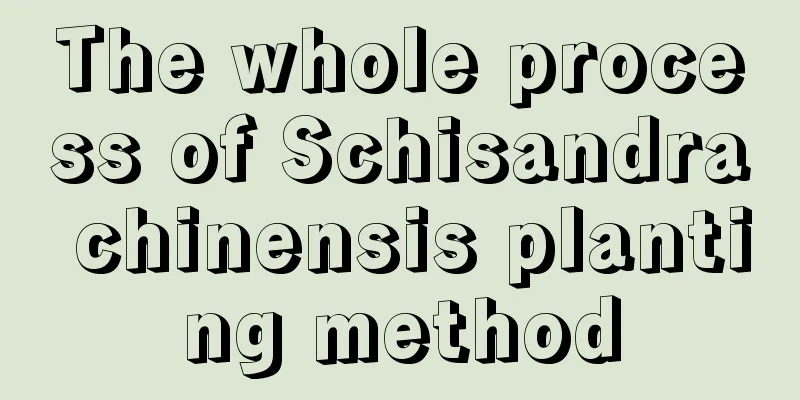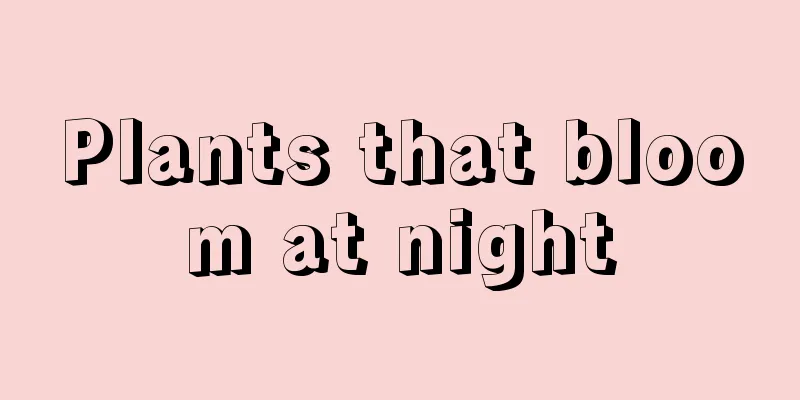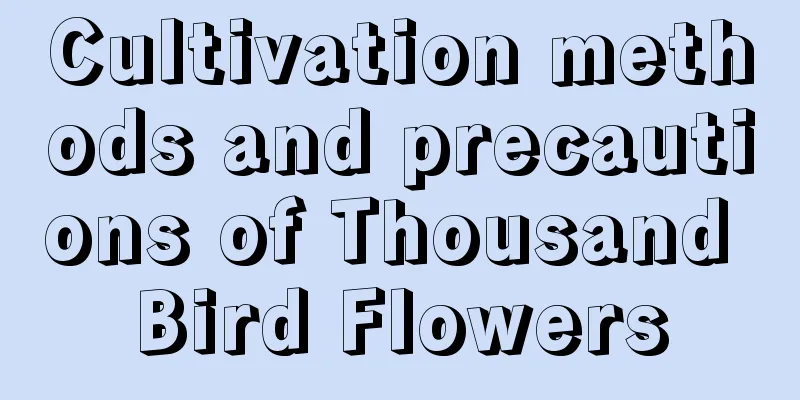The whole process of Schisandra chinensis planting method

|
Schisandra chinensis is a Chinese medicinal material with high demand. Due to the limited wild resources, it must be artificially cultivated to meet market demand. Below we will introduce the whole process of artificial cultivation of Schisandra chinensis. 1. Site selection and land preparation The Schisandra garden should be located on flat land or shady slopes with good drainage and low groundwater level. Choose forest edge or cultivated land with fertile soil, deep soil layer and good drainage, preferably humus soil and sandy loam. Select a good piece of land, apply 20-30 tons of base fertilizer per hectare, level and harrow the land, and make ridges with a ridge height of about 15-25cm and a width of 40-50cm. 2. Planting of seedlings One-year-old seedlings should be selected, and the selected seedlings should have a root neck diameter of 0.25-0.4cm and a stem length of 15-25cm. Before transplanting, take out the stored seedlings, soak them in clean water for 12-24 hours, cut off moldy and damaged roots, and cut the longer roots to 15-20cm. The time for transplanting seedlings is from late April to mid-May, when the soil thaws by 10-15cm. 3. Planting Dig a planting hole with a diameter of 30-40cm and a depth of 25cm. Use a small amount of soil dug out and mix it with an appropriate amount of compound fertilizer and backfill it halfway into the hole. Then put the seedlings in, planting one plant in each hole. Allow the roots to stretch during planting to prevent root collapse and root inversion. Backfill the remaining soil, gently shake the seedlings to make the roots close to the soil, and tamp the soil firmly. 4. Intertillage and weeding Clearing ditches and adding soil can thicken the soil layer, which is beneficial to root growth. It can be carried out three times a year. The first time is when small grass occurs in large quantities. The second time is in June and July. First, pull out the big grass and then clear the ditch. The third time is in August, just pull out the big grass. 5. Water and fertilizer management For top dressing, generally dig a 15-20cm deep ring ditch 30-50cm around the roots and cover with soil after fertilization. Be careful not to cut off the roots of Schisandra chinensis when digging trenches, and combine fertilization with watering. During droughts, water frequently in small amounts, loosen the soil and weed in time after watering, and drain frequently when it rains. Ensure that the soil is moist and there is no water accumulation in the field. 6. Scaffolding Schisandra chinensis is a vine plant and cannot grow independently. It needs to be framed in the second year after transplanting. A trellis should be used with a height of 1.8 meters and a frame material diameter of 3-5 centimeters. Cement columns, angle steel or wooden poles can be used. Bury a pillar every 2-3 meters, use a wooden pole or No. 8 wire to pull a horizontal line on the pillar, and erect a bamboo pole with a diameter of 1.5-2 cm and a length of 2.5-3.0 meters at each plant. Lead the branches onto the frame in a clockwise direction, tie them with ropes at first, and then let them naturally wrap around the frame. 7. Assisted pollination The pollination method is to first collect the male flowers or pollen, then use a brush to apply the pollen to the stigma of the female flower or connect the male and female flowers. No matter which method is used, do not hurt the female flowers. The fruits mature in late August to late September. That’s it |
<<: How to grow seal succulents, what to do if the leaves are wrinkled
>>: How to grow sapphire succulents and what is the difference between it and ruby
Recommend
How to grow a money tree
1. Planting Ground Before planting, you need to p...
What soil to use for potted plum blossoms
1. What soil to use Plum blossoms have good growt...
What flowers are suitable for growing in Lishui? What are the city flowers and trees?
1. Climate characteristics of Lishui Lishui has a...
How to plant chive seeds Chive seed sowing time and steps
Leek seeds are a plant of the lily family. After ...
Can lilies bloom without sunlight? Do they need sunlight during their flowering period?
1. Can flowers bloom without sunlight? Lily is a ...
How to propagate the succulent plant Tia? Propagation methods and key points
How to breed succulent Tia When propagating the s...
Can durian seeds be planted? How can durian seeds be planted to grow durian?
When planting durian seeds, place them in a warm ...
Cherry bird-proofing trick
1. Bird-proof net If the estate is relatively sma...
How to make asparagus fern sprout more and how to grow it strong
1. Suitable soil If you want it to be stronger an...
How to water the purple qi donglai flower and how often to water it
Overview of watering the Purple Air Flower How to...
Can I plant flowers without pine needles rotting?
1. Is it possible? Generally, when using pine nee...
How to water the pennywort
Taboo What the catnip can't stand the most is...
Do cacti prefer shade or sunlight?
Do cacti prefer shade or sun? Cactus likes the su...
Primrose Pest Control
Primrose Pests - Long-tailed Mealybug Symptoms Th...
How to grow green radish
1. Soil culture method 1. Soil: To grow green rad...









